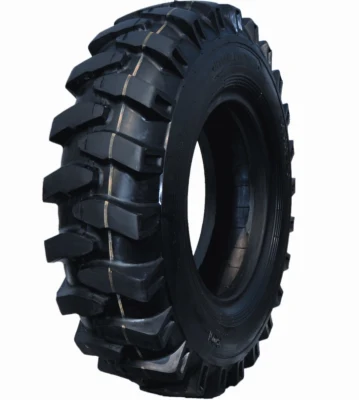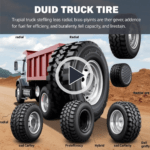# The Ultimate Guide to All-Terrain Tyres: Conquering Every Path with Your 4×4
You’ve invested in a capable 4×4 for a reason—to explore the unbeaten path, tackle challenging weather, and perhaps even transform your daily commute into a minor adventure. But if you’re still rolling on the factory-standard highway tyres, you’re not unlocking your vehicle’s full potential. The single most impactful upgrade any 4×4 owner can make is fitting a set of premium all-terrain (A/T) tyres. These versatile workhorses bridge the gap between rugged off-road capability and civilized on-road manners, offering the perfect balance for drivers who demand performance everywhere. This comprehensive guide will navigate you through everything you need to know about all-terrain tyres, from decoding their design to choosing the perfect set for your rig and ensuring they keep you safe for miles to come.
What Exactly Are All-Terrain Tyres?
All-terrain tyres are a hybrid category designed to perform competently on a variety of surfaces, from paved roads and gravel to mud, sand, and light rock. They are the ideal choice for the 4×4 enthusiast who spends a significant amount of time on the highway but requires confident traction and durability for weekend adventures, hunting trips, or navigating poor weather conditions.
You can identify an all-terrain tyre by its distinctive tread pattern. It typically features larger, independent tread blocks with wider grooves (or voids) than a highway tyre, but with a tighter, less aggressive pattern than a dedicated mud-terrain (M/T) tyre. Another key characteristic is the presence of biting edges and sipes—thin slits in the tread blocks that enhance grip on wet pavement and in wintery conditions.
Anatomy of an All-Terrain Tyre: Key Features Explained
Understanding the construction of an A/T tyre will help you appreciate its capabilities and make an informed purchase.
Tread Design and Compound
The tread is the heart of the tyre’s performance. A/T treads use a sturdy rubber compound resistant to chipping and tearing when navigating sharp rocks and debris. The arrangement of blocks and grooves is engineered to eject mud and water efficiently while providing a stable contact patch on pavement.
Sidewall Construction
Many all-terrain tyres feature reinforced sidewalls, often with additional rubber protection or fabric layers (like aramid) to resist punctures and abrasions from rocks, roots, and curbs. Look for features like “rim protectors” that help shield your expensive wheels from damage.
Load Range and Ply Rating
This indicates the tyre’s strength and load-carrying capacity. For heavier 4x4s and trucks, especially those used for towing or carrying heavy loads, a higher load range (e.g., Load Range C, D, or E) is crucial. It often corresponds with a stiffer sidewall, which improves durability off-road but can slightly compromise ride comfort on-road.
Top All-Terrain Tyre Brands and Models to Consider
The market is filled with excellent options, but a few consistently rise to the top based on expert reviews and user feedback. Here are some of the most respected names in the game:
- BFGoodrich KO2: Often considered the gold standard, the KO2 is renowned for its incredible durability, aggressive looks, and proven performance in a wide range of conditions. It features a tough sidewall and excellent snow traction, even earning the Three-Peak Mountain Snowflake (3PMSF) rating.
- Toyota Open Country A/T III: A fantastic all-rounder that excels in wet weather and offers a remarkably quiet and comfortable ride for an A/T tyre. It’s a top pick for drivers who prioritize on-road refinement without sacrificing off-road prowess.
- Goodyear Wrangler DuraTrac: Leaning towards the more aggressive end of the A/T spectrum, the DuraTrac is a favorite for its exceptional traction in mud and snow. Its self-cleaning tread design is highly effective. You can explore the full range on the Goodyear Official Website.
- Michelin LTX A/T 2: Michelin brings its expertise in ride comfort and longevity to the A/T segment. This tyre is legendary for its treadlife and superb on-road manners, making it perfect for heavy SUVs and trucks that see mostly highway use with occasional off-pavement excursions. Discover more at the Michelin Official Website.
- Pirelli Scorpion All Terrain Plus: Engineered for modern SUVs and light trucks, Pirelli’s offering focuses on balanced performance, low noise, and all-weather safety, including severe snow service certification.
For detailed comparisons and test data from independent experts, resources like Tire Rack Testing and Reviews are invaluable.
Choosing the Right All-Terrain Tyre for Your 4×4: A Practical Guide
Selecting the perfect tyre isn’t about picking the most popular one; it’s about finding the right one for your specific needs.
1. Assess Your Driving Habits
Be honest with yourself. What percentage of your driving is on-road vs. off-road? If it’s 90/10, a less aggressive, more road-centric A/T like the Michelin or a Bridgestone model (found on the Bridgestone Official Website) will serve you better. If you frequently encounter deep mud or rocky trails, a more aggressive pattern like the KO2 or DuraTrac is warranted.
2. Consider Your Climate
If you experience harsh winters, prioritize an A/T tyre with the 3PMSF symbol. This indicates it meets specific snow traction performance standards, making it a legitimate option for winter driving, though it does not replace dedicated winter tyres in extreme conditions.
3. Get the Size Right
Sticking to your manufacturer’s recommended size is the safest bet. However, many 4×4 owners opt for slightly larger tyres for improved ground clearance and a more aggressive look. Be aware that this may require modifications (lifting), can affect speedometer accuracy, fuel economy, and gearing. For a specific size like 265/60R18, you can research 265/60R18 All Terrain Tyres Price to budget accordingly.
4. Don’t Ignore Load Rating and Speed Rating
Always match or exceed the load rating specified for your vehicle. This is critical for safety, especially when towing or carrying heavy payloads. The speed rating must also be appropriate for your vehicle’s capabilities.
Safety Considerations and Best Practices
New tyres are a significant safety upgrade, but they must be maintained properly.
- Rotation is Key: To ensure even wear and maximize tread life, rotate your all-terrain tyres every 5,000 to 8,000 miles. This is especially important for 4x4s, which often have different wear patterns on the front and rear axles.
- Pressure Matters: Always maintain the tyre pressure recommended by your vehicle’s manufacturer for on-road driving. The American Automobile Association emphasizes that incorrect pressure is a leading cause of tyre failure. For off-roading, you may need to air down (reduce pressure) to increase the contact patch and improve traction. Always re-inflate to proper road pressure immediately after.
- Regular Inspections: Frequently check your tyres for signs of damage—cuts, punctures, uneven wear, or embedded objects. Off-road use makes this even more critical.
- Mind the Limits: Even the best all-terrain tyre has limits. Understand that wet pavement, packed snow, and ice will always present challenges. Adjust your driving style accordingly, increasing following distances and avoiding sudden maneuvers. For comprehensive safety tips, visit Tire Safety Organization.
Maximizing Your Investment: Expert Tips for Longevity
To get the most miles out of your investment, follow these pro tips:
- Alignment Check: After installing new tyres, get a professional wheel alignment. This prevents premature and uneven wear from the very start.
- Balance: Ensure each tyre is properly balanced to avoid vibrations and uneven wear.
- Drive Smart: Aggressive acceleration, cornering, and braking will significantly shorten the life of any tyre, especially more robust A/Ts.
- Storage: If you switch to dedicated winter tyres, store your all-terrains properly in a cool, dry, and dark place away from ozone-producing equipment.
Frequently Asked Questions (FAQ)
Are all-terrain tyres good in snow?
Many modern all-terrain tyres with the Three-Peak Mountain Snowflake (3PMSF) symbol are very capable in light to moderate snow. They are a massive improvement over highway tyres. However, for severe winter conditions with heavy snow and ice, dedicated winter tyres will always provide superior stopping and handling performance.
How noisy are all-terrain tyres compared to highway tyres?
Modern all-terrain tyre technology has come a long way in reducing road noise. While generally slightly louder than a pure highway tyre, many contemporary A/T designs are remarkably quiet and comfortable, making them perfectly suitable for daily driving. Brands like Toyo and Yokohama (see the Yokohama Tire Official Website) are known for their quiet tread patterns.
Will all-terrain tyres affect my fuel economy?
Yes, typically you can expect a slight decrease in fuel economy (1-2 MPG). The heavier construction and more aggressive tread pattern create more rolling resistance than a smooth highway tyre. The extent of the impact depends on the specific tyre model and your driving habits.
How long do all-terrain tyres typically last?
With proper maintenance (rotation, alignment, correct pressure), you can expect a high-quality set of all-terrain tyres to last between 40,000 and 65,000 miles. Your driving style (highway vs. rock crawling) will be the biggest factor in determining actual lifespan.
Can I put all-terrain tyres on a 2WD truck or SUV?
Absolutely. While they won’t provide the mechanical traction of a 4WD system, they will significantly improve off-pavement grip, wet weather handling, and overall durability compared to standard tyres on a 2WD vehicle.
Upgrading to a set of premium all-terrain tyres is more than just an aesthetic modification—it’s an investment in capability, safety, and confidence. By carefully considering your needs and following the guidance in this article, you can choose the perfect set of shoes for your 4×4 and truly unlock its potential to take you anywhere, anytime.






